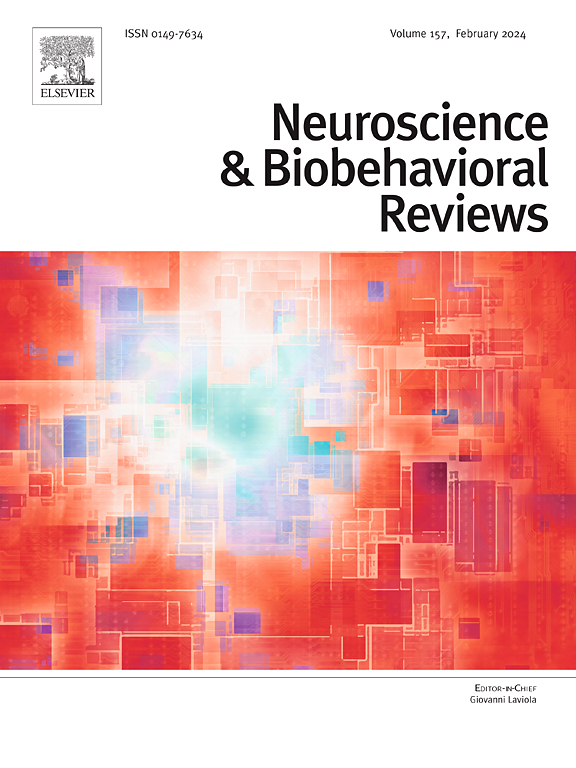童年逆境的影响:两种特定的神经模式
IF 7.5
1区 医学
Q1 BEHAVIORAL SCIENCES
引用次数: 0
摘要
童年逆境(CA)与一生中精神病理风险的升高有关,而大脑功能的改变被认为在将CA与心理脆弱性联系起来方面起着重要作用。先前的研究表明,CA通常影响情绪加工,特别是影响奖励加工和认知控制,但CA相关的神经和功能网络在这些过程中的趋同证据仍有待充分理解。为了研究CA对功能性脑激活的影响,本研究在涉及三个任务域的神经影像学研究中进行了激活似然估计(ALE)分析:情绪处理、认知控制和奖励处理。ALE结果显示在左杏仁核和脑岛有两个显著的ca相关的激活聚集。为了更好地理解和表征这些ale衍生集群的功能,我们采用了Meta-Analytic Connectivity Modeling (MACM)方法来识别协同激活图,并采用功能解码方法来揭示集群相关的心理过程。结果表明,CA有两个不同的神经和功能网络:一个以杏仁核为中心的情绪处理网络和一个以岛为中心的躯体运动处理网络。这些特定的神经模式表明CA对参与感觉-运动和情绪处理功能的多个神经和功能网络的影响。我们的研究结果提供了与CA相关的神经生物学嵌入的见解。本文章由计算机程序翻译,如有差异,请以英文原文为准。
The effects of childhood adversity: Two specific neural patterns
Childhood adversity (CA) is associated with an elevated risk of psychopathology across the lifespan and altered brain functions are thought to play an important role in linking CA to mental vulnerability. Previous research has proposed that CA generally influences emotion processing and particularly affects reward processing and cognitive control, yet convergent evidence for CA-related neural and functional networks underlying these processes remains to be fully understood. To investigate the impact of CA on functional brain activations, the present study performed Activation Likelihood Estimation (ALE) analyses across neuroimaging studies involving three task domains: emotion processing, cognitive control, and reward processing. ALE results revealed two significant CA-related convergences of activation in the left amygdala and insula. To better understand and characterize the functions of these ALE-derived clusters, we applied the Meta-Analytic Connectivity Modeling (MACM) approach to identify co-activation maps, and the functional decoding approach to reveal cluster-related psychological processes. Results demonstrated two distinct neural and functional networks in CA: an amygdala-centered emotion processing network and an insula-centered somatomotor processing network. These specific neural patterns indicate the effect of CA on multiple neural and functional networks engaged in sensory-motor and emotion processing functions. Our results provide insights into the neurobiological embedding associated with CA.
求助全文
通过发布文献求助,成功后即可免费获取论文全文。
去求助
来源期刊
CiteScore
14.20
自引率
3.70%
发文量
466
审稿时长
6 months
期刊介绍:
The official journal of the International Behavioral Neuroscience Society publishes original and significant review articles that explore the intersection between neuroscience and the study of psychological processes and behavior. The journal also welcomes articles that primarily focus on psychological processes and behavior, as long as they have relevance to one or more areas of neuroscience.

 求助内容:
求助内容: 应助结果提醒方式:
应助结果提醒方式:


